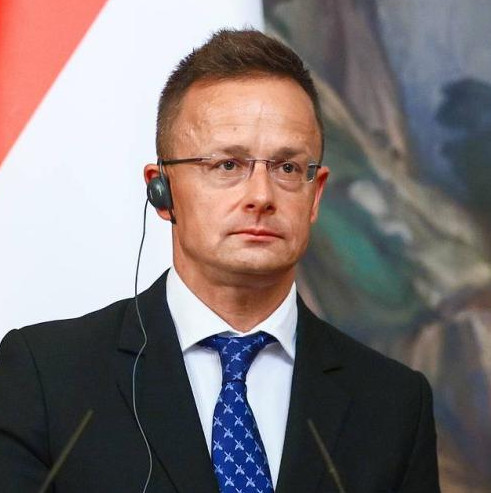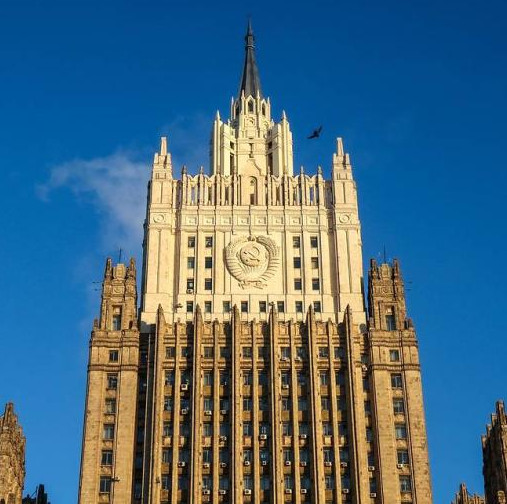The instantly-recognizable appearance of this weapon is well known to many people all over the world, while its commercial success is envied on a global scale by all the biggest world manufacturers. The "RPG" acronym (in Russian, "handheld antitank grenade-launcher") is understood without translation by most military (and not only military) men the world over.
The first RPG with an index "2" was put in the service of the Soviet Army as long ago as 1949. For its prototype the Soviet designers had used the famous German "faustpatron" of the times of the Second World War, but of course after considerably modifying and improving it. In 1961 RPG-2 was replaced by the now-almost-legendary RPG-7, the most popular handheld antitank grenade-launcher in the world.
Replicated, like the world-renowned "Kalashnikov" submachine gun, in millions of units, the RPG has been used, since the mid-1960s, in practically all local conflicts and wars, from Vietnam and the Middle East to Afghanistan, the Balkans, Somalia and Iraq. In was manufactured under license by the Warsaw Pact countries, Yugoslavia and China, and without any license, including in backyard workshops, by many countries of the world.
The RPG has become extremely popular thanks to its high efficiency, simplicity, reliability and universality. Many instances are known of the RPG having been successfully used not only against tanks, armored vehicles and cars, but also against low-flying helicopters and even aircraft when taking off and landing.
Thanks to the practically inexhaustible potential for modernization, envisioned in its design, RPG-7 has become the nucleus of a whole family of handheld grenade-launchers which, due to various improvements in the design elements and, above all, the development of various types and purposes of grenades (hollow charge, thermobaric, splinter, incendiary, etc.) remain still at the level of modern requirements.
The grenade-launcher has even been honored to become a part of the heraldry of several counties, organizations and liberation movements. Additional advertising for the RPG has been unwittingly provided by Hollywood, by arming many of the "bad guys" in its thrillers and action films with it. Unfortunately, in real life this weapon has also often gotten into the hands of terrorists and criminal organizations. For instance, suicide killers in Palestine and Iraq do have a liking for hugging it in their arms when being video-filmed before going on their deadly "missions".
Experts believe that the grenade-launchers of the RPG family have repeated, by and large, the success of the Kalashnikov submachine gun, having won an uncontested leadership of the world market of portable means of fighting against armor, as well as light structures and covers.
According to the latest data of the "Forecast International" analytical corporation, today the various Russian-made modifications of the RPG represent 68 percent of the world market of handheld anti-tank and anti-bunker weapons by volume and 51 percent by cost. Notably, the volume of that market over the period of up to 2014 is expected to come to 1.9 million units valued at $5.33 billion.
The most popular models today are RPG-26 and RPG-27, their share during the above-said period coming up to 54 percent of all the new grenade-launcher production in the world, or 31 percent by cost. However, the famous RPG-7 (and its latest modification RPG-16) remains in great demand. These models, accounting for both the licensed and the "pirate" versions, will represent 8 percent of all the new production, or 5.63 percent by cost.
Despite the evident dominance of Russian-made grenade-launchers on the world market, its European competitors still hope to make Russia move over and make room for them in this highly promising and topical field. At present all the European Union countries pooled together manufacture only about 14 percent of all the portable means of fighting the armor and clad targets. However, up to 2014 the high tech European products will account for 33 percent of the world production by cost.
Against the background of Russia and the European Union, the positions of the US and China on this market look very modest. The only US company operating on it, "Talley Defense Systems", can only count on 5.14 percent of the market by volume, and 5.26 percent by cost. Strange as it may seem, the Chinese share represents less than 1 percent of the world grenade-launcher sales as yet (grenade-launcher "Type 69"), though China has been vigorously pushing its military hardware on the world market.
International experts believe that the world grenade-launcher market continues to develop dynamically, which can be explained by the high efficiency and relatively low cost of such weapons at the time of "asymmetric wars", like the current Iraq campaign. Under these conditions, the Russian-made RPG tested by time and innumerable wars and conflicts has all the chances to maintain still its leadership in this field for a long time to come.
The first RPG with an index "2" was put in the service of the Soviet Army as long ago as 1949. For its prototype the Soviet designers had used the famous German "faustpatron" of the times of the Second World War, but of course after considerably modifying and improving it. In 1961 RPG-2 was replaced by the now-almost-legendary RPG-7, the most popular handheld antitank grenade-launcher in the world.
Replicated, like the world-renowned "Kalashnikov" submachine gun, in millions of units, the RPG has been used, since the mid-1960s, in practically all local conflicts and wars, from Vietnam and the Middle East to Afghanistan, the Balkans, Somalia and Iraq. In was manufactured under license by the Warsaw Pact countries, Yugoslavia and China, and without any license, including in backyard workshops, by many countries of the world.
The RPG has become extremely popular thanks to its high efficiency, simplicity, reliability and universality. Many instances are known of the RPG having been successfully used not only against tanks, armored vehicles and cars, but also against low-flying helicopters and even aircraft when taking off and landing.
Thanks to the practically inexhaustible potential for modernization, envisioned in its design, RPG-7 has become the nucleus of a whole family of handheld grenade-launchers which, due to various improvements in the design elements and, above all, the development of various types and purposes of grenades (hollow charge, thermobaric, splinter, incendiary, etc.) remain still at the level of modern requirements.
The grenade-launcher has even been honored to become a part of the heraldry of several counties, organizations and liberation movements. Additional advertising for the RPG has been unwittingly provided by Hollywood, by arming many of the "bad guys" in its thrillers and action films with it. Unfortunately, in real life this weapon has also often gotten into the hands of terrorists and criminal organizations. For instance, suicide killers in Palestine and Iraq do have a liking for hugging it in their arms when being video-filmed before going on their deadly "missions".
Experts believe that the grenade-launchers of the RPG family have repeated, by and large, the success of the Kalashnikov submachine gun, having won an uncontested leadership of the world market of portable means of fighting against armor, as well as light structures and covers.
According to the latest data of the "Forecast International" analytical corporation, today the various Russian-made modifications of the RPG represent 68 percent of the world market of handheld anti-tank and anti-bunker weapons by volume and 51 percent by cost. Notably, the volume of that market over the period of up to 2014 is expected to come to 1.9 million units valued at $5.33 billion.
The most popular models today are RPG-26 and RPG-27, their share during the above-said period coming up to 54 percent of all the new grenade-launcher production in the world, or 31 percent by cost. However, the famous RPG-7 (and its latest modification RPG-16) remains in great demand. These models, accounting for both the licensed and the "pirate" versions, will represent 8 percent of all the new production, or 5.63 percent by cost.
Despite the evident dominance of Russian-made grenade-launchers on the world market, its European competitors still hope to make Russia move over and make room for them in this highly promising and topical field. At present all the European Union countries pooled together manufacture only about 14 percent of all the portable means of fighting the armor and clad targets. However, up to 2014 the high tech European products will account for 33 percent of the world production by cost.
Against the background of Russia and the European Union, the positions of the US and China on this market look very modest. The only US company operating on it, "Talley Defense Systems", can only count on 5.14 percent of the market by volume, and 5.26 percent by cost. Strange as it may seem, the Chinese share represents less than 1 percent of the world grenade-launcher sales as yet (grenade-launcher "Type 69"), though China has been vigorously pushing its military hardware on the world market.
International experts believe that the world grenade-launcher market continues to develop dynamically, which can be explained by the high efficiency and relatively low cost of such weapons at the time of "asymmetric wars", like the current Iraq campaign. Under these conditions, the Russian-made RPG tested by time and innumerable wars and conflicts has all the chances to maintain still its leadership in this field for a long time to come.


